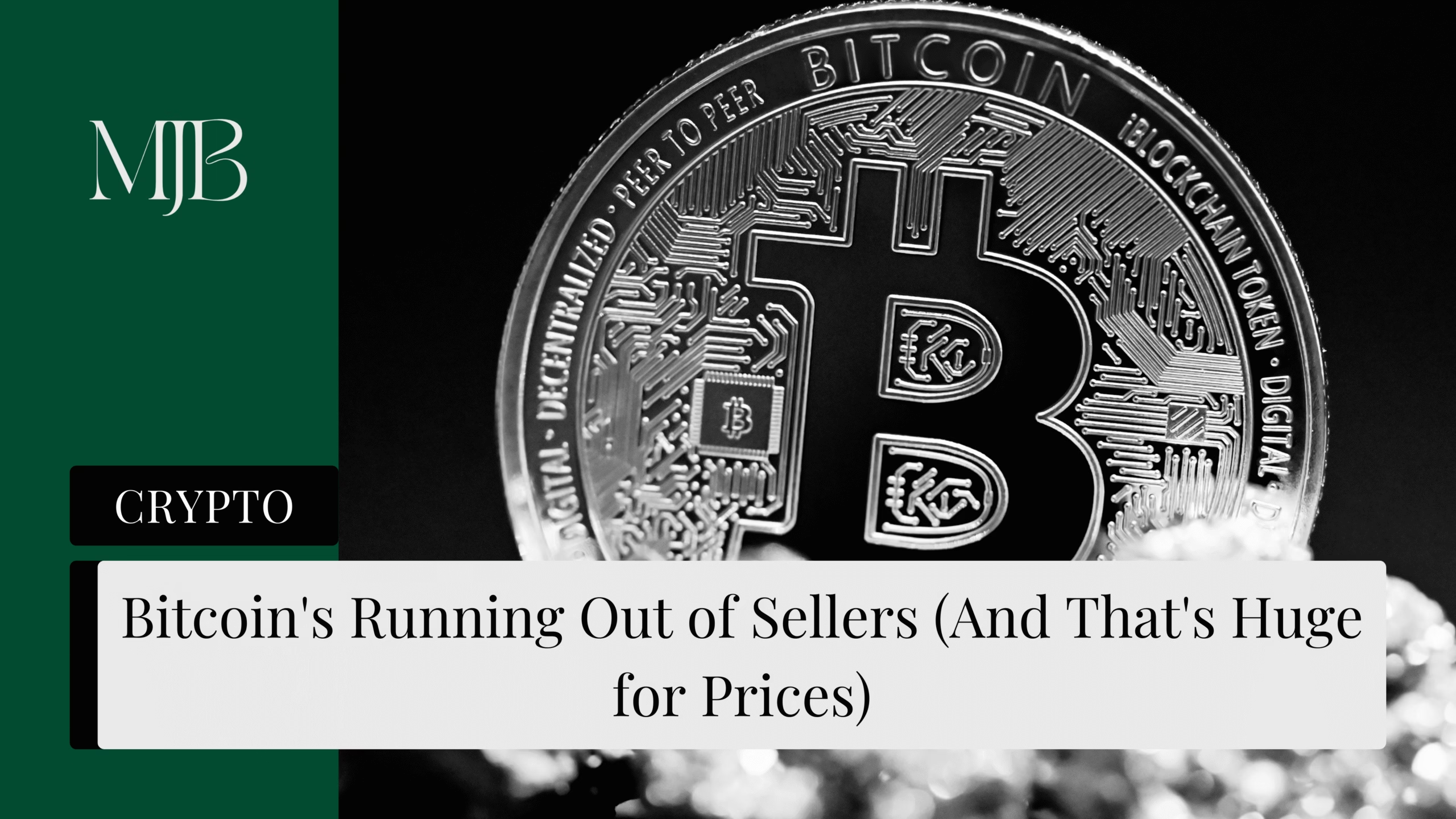Bitcoin sell-side liquidity has crashed to its lowest point in four years, while Bitcoin demand is absolutely exploding. Translation? We’re staring at a classic Bitcoin supply shock that could send prices into orbit.
Here’s the kicker: Bitcoin demand is growing by 228,000 BTC monthly, but available inventory for sale has dropped to just 3.397 million BTC. That’s like having Black Friday shoppers storm a store that’s running dangerously low on stock.
Bitcoin Supply and Demand: The Numbers
Growing Bitcoin Demand Signals
Bitcoin accumulator addresses (think: digital hoarders who never sell) are stacking at a rate of 495,000 BTC per month. That’s unprecedented territory, folks.
Meanwhile, stablecoin market capitalisation hit $200 billion—a 20% jump since late October. More stablecoins usually means more dry powder ready to buy Bitcoin. It’s like having $200 billion sitting in the loading dock, waiting to pounce.
Bitcoin Sell-Side Inventory Shrinking Fast
Here’s where things get spicy. The total Bitcoin ready for sale across exchanges, miners, and OTC desks has plummeted by 678,000 BTC this year alone. We haven’t seen inventory this tight since October 2020 (remember what happened to prices after that?).
The liquidity inventory ratio tells the real story: current sell-side stock can only cover 6.6 months of demand, compared to 41 months back in early October. That’s like going from a year’s worth of supplies, to barely having enough for next week.

Why Bitcoin Supply Crunch Matters for Crypto Investors
Think of Bitcoin like tickets for the World Cup Final. When everyone wants them but hardly anyone’s selling, prices go through the roof. That’s exactly what’s happening here.
Cryptoquant researchers point to growing anticipation around pro-crypto policies from the incoming U.S. administration, including talks of a strategic Bitcoin reserve. When governments start hoarding your asset, you know something big is brewing.
This supply shortage could be the rocket fuel that pushes prices into uncharted territory. Basic economics: when demand outstrips supply by this much, buckle up.
The Bottom Line
Bitcoin’s supply shock isn’t just a technical indicator—it’s a fundamental shift that could reshape the entire crypto landscape. Smart money is already positioning for what looks like an inevitable squeeze.
Whether you’re a seasoned trader or crypto-curious, keeping an eye on these supply dynamics could be the difference between catching the wave and watching from the sidelines.
FAQ
Q1: What exactly is Bitcoin sell-side liquidity?
A: It’s the total amount of Bitcoin available for sale across exchanges, mining operations, and over-the-counter trading desks. Think of it as the “for sale” inventory in the Bitcoin market.
Q2: Why should I care about accumulator addresses?
A: These are long-term holders who rarely or never sell their Bitcoin. When they’re buying aggressively (495,000 BTC monthly), it removes supply from circulation and typically signals strong bullish sentiment.
Q3: How does stablecoin market capitalisation relate to Bitcoin prices?
A: Stablecoins are often used to buy Bitcoin and other cryptocurrencies. A growing stablecoin market capitalisation ($200 billion) suggests more capital is ready to flow into crypto, which historically correlates with Bitcoin price increases.
Q4: What’s a liquidity inventory ratio and why does 6.6 months matter?
A: It measures how long current sell-side inventory would last given current demand levels. Dropping from 41 months to 6.6 months means we’re moving from abundant supply to potential scarcity very quickly.
Q5: Could this supply shock actually push Bitcoin prices higher?
A: While nobody can predict prices with certainty, basic supply and demand economics suggest that when demand significantly outpaces available supply, upward price pressure typically follows. The combination of record demand and four-year-low inventory creates conditions historically associated with price rallies.
DISCLAIMER
Effective Date: 15th July 2025
The information provided on this website is for informational and educational purposes only and reflects the personal opinions of the author(s). It is not intended as financial, investment, tax, or legal advice.
We are not certified financial advisers. None of the content on this website constitutes a recommendation to buy, sell, or hold any financial product, asset, or service. You should not rely on any information provided here to make financial decisions.
We strongly recommend that you:
- Conduct your own research and due diligence
- Consult with a qualified financial adviser or professional before making any investment or financial decisions
While we strive to ensure that all information is accurate and up to date, we make no guarantees about the completeness, reliability, or suitability of any content on this site.
By using this website, you acknowledge and agree that we are not responsible for any financial loss, damage, or decisions made based on the content presented.






